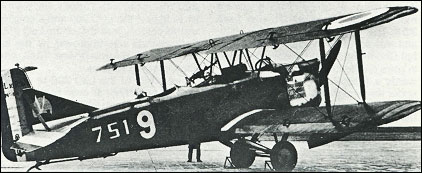 |
Levasseur PL 101929 |  |
| RECONNAISSANCE AIRCRAFT | Virtual Aircraft Museum / France / Levasseur |
 |
The prototype of the Levasseur PL 10 three-seat carrier reconnaissance (R.3b) biplane flew for the first time in the spring of 1929. The PL 10 had equal-span folding wings, and the deep slab-sided fuselage had a hull-shaped undersur-face. Armament comprised a single 7.5mm machine-gun operated by the pilot, plus twin 7.5mm guns operated by a gunner, whose cockpit was immediately behind that of the pilot. The observer, in the rear cockpit, had a Cayere-Montagne bomb-sight, and six 10kg bombs could be carried on underwing racks. Production of the PL 10 totalled 30 aircraft, and these began to enter service with carrier Escadrille 7S1 in 1931. The PL 101.01 made its first flight in March 1933 differing from, the PL 10 in having wide-track landing gear and limited sweepback on the wings. Thirty production aircraft followed, these weighing 270kg more than the PL 10s in overload condition, but being credited with a maximum speed of 220km/h. PL 101s replaced the PL 10s on the Beam during 1935, and five were still in service at the outbreak of World War II. Several projects were developed from the PL 101, the only ones built being the PL 107 (two prototypes) and the PL 108. They introduced a fuselage of improved aerodynamic shape, had wheel fairings for the fixed landing gear and a glazed crew canopy. Powered by a 552kW Gnome-Rhone 9Kfr, the PL 107 had a maximum speed of 235km/h, and the PL 108 with a 537kW Hispano-Suiza 9Vbrs radial could attain 266km/h. Final product of the company was the PL 400, built to an Armee de I'Air requirement, inspired by the German Fieseler Fi 156 Storch, for a STOL observation machine. A high-wing cabin monoplane powered by a Potez 9C radial of 164kW, the PL 400 flew for the first time on 19 December 1939, but German occupation put an end to construction of the PL 401 development with a Renault 6Q-09 engine of similar power.
|  COMPANY PROFILE | ||||||||||||||||||||||||||
 |

|
